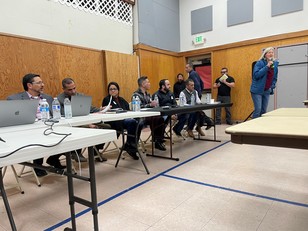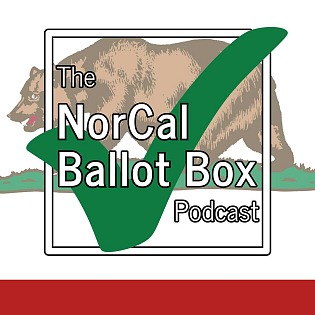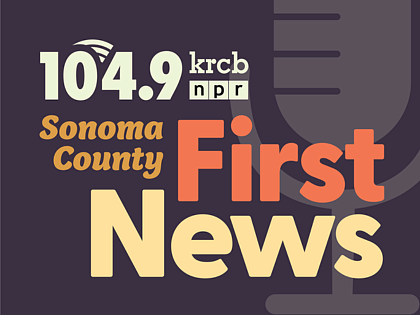 Panelists at the Healdsburg Community Center
Panelists at the Healdsburg Community Centerphoto credit: Noah Abrams/KRCB
Community members, leaders, and organizers gathered Thursday evening, March 30th, at the Healdsburg community Center for the penultimate community encuentro, or meeting, to discuss the place of labor and Healdsburg’s working within the city.
Healdsburg’s days as a humble farming town and “buckle of the prune belt” are long over.
The grape is undisputed king now, and it has transformed the city into a swank tourist destination of international repute.
The changes however, have left many of the city’s residents, especially agricultural and hospitality workers, struggling to keep up with a soaring cost of living.
Longtime Healdsburg resident and former US Department of Labor analyst, Zeke Guzman shared his observations about the city’s changing business landscape.
"With the powerful economic interest, when they come in, they elevate the value of their dollar and depreciate the value of the dollar of the hard worker, of the essential worker," Guzman said.
Beryl Adler, owner of the popular Black Oak Coffee company, and a panelist beside Guzman, said as a small business owner with a community focus, he struggles to balance costs while still remaining accessible to Healdsburg locals.
"The most important resource that you have is your team members and you want to take care of them. We raised our minimum wage in our cafe to compete with the most expensive area, which happens to be Santa Rosa," Adler said. "The cost of goods have gone up 30%, so right now we're at $2.75 for a small cup of coffee. Pretty soon we're going to be at $3 for a cup of coffee, which, you know, the tourists aren't going to complain about, but we're affordable because this is for the locals here."
Labor organizer and panelist Davin Cardenas said well known labor dynamics are a major factor in the struggle for an affordable community.
"Farm work should be a middle class job given the wealth which we live in, right?" Cardenas said. "But then there's also the question of threat of retaliation for workers who actually do stand up, who have the willingness to actually speak up and say something. The threat of retaliation is looming."
Luz Navarrette, a therapist and longtime resident, asked whether buyers in developments such as the new and pricey Mill District should be contributing more.
"What I'm seeing now is this entrance to Healdsburg with all of these million dollar places that are going to go up," Navarette said. "I'm thinking how the city begins to charge those people that are moving into Healdsburg or asking them to make a donation for the working people of Healdsburg. Like out of the $8 million, they could donate some money and maybe the next meeting you have lumber here, you know, things that are going to build homes."
Kim Bender, executive director of the Healthcare Foundation of Northern Sonoma County, senses discomfort from more wealthy and secure residents, contributing to a feeling that Healdsburg is inaccessible to hourly workers.
"A fear of changing our lifestyle, that we might have a smaller house, or that we might have to share our space with more people, or that we might make less money or pay more for a coffee," Bender said.
Though the meeting was focused on the history and place of labor in Healdsburg, the need for accessible and affordable housing was a major topic, with calls for action to city leaders resonating with many in attendance.

 Live Radio
Live Radio




